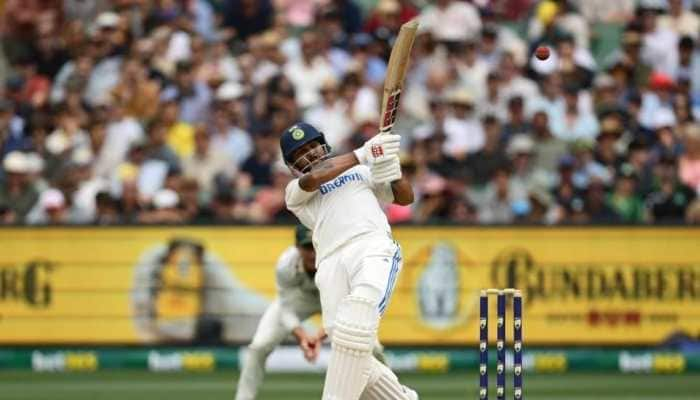All about Dengue and Chikungunya
Dengue fever is acute febrile diseases, found in the tropics, with a geographical spread similar to malaria. Dengue is transmitted to humans by the mosquito Aedes aegypti.
Trending Photos
)
Dengue fever is acute febrile diseases, found in the tropics, with a geographical spread similar to malaria. Dengue is transmitted to humans by the mosquito Aedes aegypti.
All about ChikungunyaSigns and symptoms
This infectious disease is manifested by a sudden onset of fever, with severe headache, muscle and joint pains (severe pain gives it the name break-bone fever or bonecrusher disease) and rashes. The dengue rash is characteristically bright red petechia and usually appears first on the lower limbs and the chest - in some patients, it spreads to cover most of the body. There may also be gastritis with some combination of associated abdominal pain, nausea, vomiting or diarrhea.
Some cases develop much milder symptoms, which can, when no rash is present, be misdiagnosed as a flu or other viral infection. Patients with dengue can only pass on the infection through mosquitoes or blood products while they are still febrile.
The classic dengue fever lasts about six to seven days, with a smaller peak of fever at the trailing end of the fever (the so-called "biphasic pattern"). Clinically, the platelet count will drop until the patient`s temperature is normal.
Diagnosis
The diagnosis of dengue is usually made clinically. The classic picture is high fever with no localising source of infection, a petechial rash with thrombocytopenia and relative leukopenia.
Fever
Haemorrhagic tendency (positive tourniquet test, spontaneous bruising, bleeding from mucosa, gingiva, injection sites, etc.; vomiting blood, or bloody diarrhea)
Evidence of plasma leakage (haematocrit more than 20% higher than expected, or drop in haematocrit of 20% or more from baseline following IV fluid, pleural effusion, ascites, hypoproteinaemia)
Dengue shock syndrome is defined as dengue haemorrhagic fever plus: Weak rapid pulse, and narrow pulse pressure (less than 20 mm Hg) or, Hypotension for age; Cold, clammy skin and restlessness; Serology and PCR (polymerase chain reaction) studies are available to confirm the diagnosis of dengue if clinically indicated.
Epidemiology
Epidemic dengue has become more common since the 1980s - by the late 1990s, dengue was the most important mosquito-borne disease affecting humans after malaria, there being around 40 million cases of dengue fever and several hundred thousand cases of dengue hemorrhagic fever each year.
In February 2002 there was a serious outbreak in Rio de Janeiro, affecting around one million people but only killing sixteen.
Significant outbreaks of dengue fever tend to occur every five or six years. There tend to remain large numbers of susceptible people in the population despite previous outbreaks because there are four different strains of the dengue virus and because of new susceptible individuals entering the target population, either through childbirth or immigration.
In Singapore, there are about 4,000-5,000 reported cases of dengue fever or dengue haemorrhagic fever every year. In the year 2003, there were 6 deaths from dengue shock syndrome.
It is believed that the reported cases of dengue are an underrepresentation of all the cases of dengue as it would ignore subclinical cases and cases where the patient did not present for medical treatment. With proper medical treatment, the mortality rate for dengue can therefore be brought down to less than 1 in 1000.
Prevention
There is no commercially available vaccine for the dengue flavivirus. However, one of the many ongoing vaccine development programs is the Pediatric Dengue Vaccine Initiative (PDVI) which was set up in 2003 with the aim of accelerating the development and introduction of dengue vaccine(s) that are affordable and accessible to poor children in endemic countries.
Thai researchers, in phase III testing, have planned to test a dengue fever vaccine on 3,000-5,000 human volunteers within the next three years after having successfully conducted tests on animals and a small group of human volunteers.
Primary prevention of dengue mainly resides in eliminating or reducing the mosquito vector for dengue.
Public spraying for mosquitoes is the most important aspect of this vector.
Application of larvicides such as Abate to standing water is more effective in the long term control of mosquitoes.
Initiatives to eradicate pools of standing water (such as in flowerpots) have proven useful in controlling mosquito borne diseases.
Promising new techniques have been recently reported from Oxford University on rendering the Aedes mosquito pest sterile.
Personal prevention consists of the use of mosquito nets, repellents, cover exposed skin, use DEET-impregnated bednets, and avoiding endemic areas.
Liquid diet recommended
According to Naturopaths the energy needed for digestion if diverted to elimination can benefit those affected with dengue.
"A dengue affected person is put on complete liquid diet. The affected person may be given fruit juice, vegetable soups but no solid diet, neither solid fruit. Thus the energy required for digestion is diverted towards elimination," Central Council for Research in Yoga and Naturopathy Assistant Director Dr Rajiv Rastogi said.
There is no specific medicine or vaccine for dengue. But its symptoms can be reduced.
In certain cases lever swelling is also observed. "To reduce swelling of liver hot/cold fomentation and Gastrohepatic pack (cold treatments on the abdomen) may be applied," Dr Rastogi said.
After recovery the patients should take diet full of fresh fruits and vegetables to increase body`s vitality. They may take fruit juices, lemon water, honey, sprouted moong, vegetables soup and moong soup.
Bureau Report
Stay informed on all the latest news, real-time breaking news updates, and follow all the important headlines in india news and world News on Zee News.
Advertisement
Live Tv
Advertisement







)
)
)
)
)
)
)
)
)
)
